Currently, most of the lattice materials we see are composed of elongated members of the array. Similar to our familiar lightweight superstructures such as bridges and building frames, the choice of lattice geometry is effective for lightweighting. key. Some foam-like porous materials are indeed light, but usually rigid but do not meet the performance requirements of the part. The knowledge inside the crystal lattice is very deep. For example, some porous structures are called “bending dominatedâ€. These structures show excellent toughness when bent, and are ideal for absorbing energy. In this issue, Xiaobian comes with everyone. Get more knowledge in the design and manufacture of lattice.
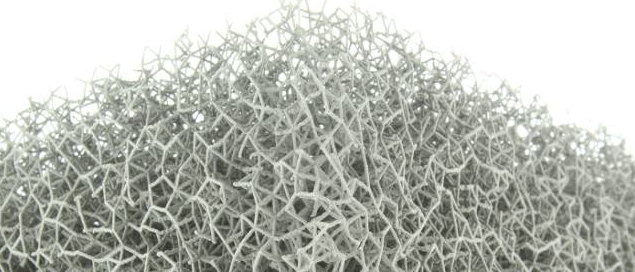
Image source: Renishaw
Every step about the growth of the lattice
The world of crystal lattice is very subtle. Just take the "bend-dominant" lattice structure. If you add a horizontal pillar in the middle, it becomes a "stretch-dominant" structure. In the case of extension or compression, the mesostructure provides the best weight-to-weight strength due to the high level of node connections, providing cross-support and preventing relative movement of the nodes.
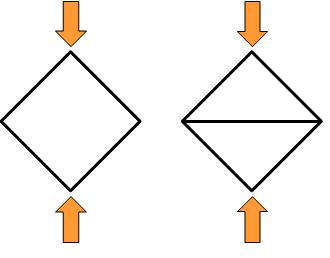
Image source: Wikipedia, on the left is "bend dominated", on the right is stretched to dominate "design
In addition to these conventional dot matrix designs, including simple support and node design. Designers can also experiment with complex designs such as small rotors. It is understood that HiETA Technologies and Exeter University are trying to apply these small rotor structures in radiators. They used fluid dynamic analysis software (CFD) to model the liquid pressure through the small rotor cells and accurately simulate the heat exchange. The experimental test was carried out in a structure of a cell size of 4 mm and a volume fraction of 30%, and the experimental results performed well.
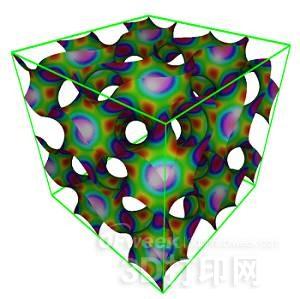
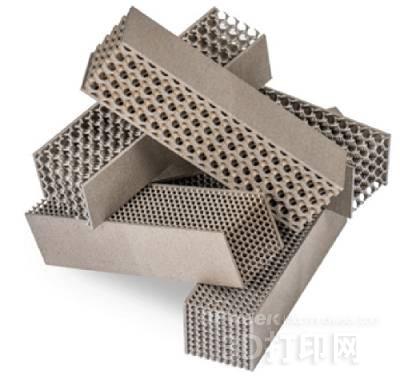
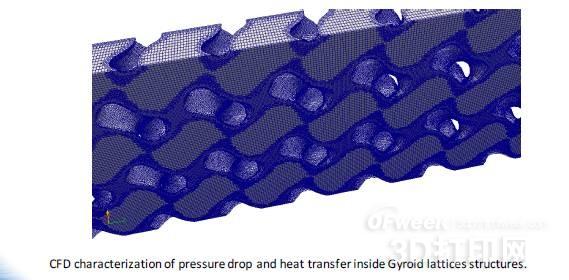
Image source: HiETA
In addition to the clever design of the small rotor, just as architecture brings a lot of inspiration to aesthetics, architecture also brings extraordinary innovation to the lattice design. Thanks to the flexibility of additive manufacturing , we can now apply the mesostructure of architectural sensation to the modeling design of additive manufacturing and provide specific mechanical properties through these mesostructures.
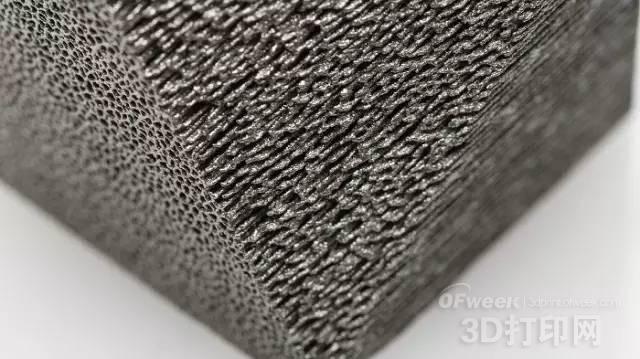
Image: The material of the fiber structure provides rigidity in different directions. The material is 316L stainless steel. The processing equipment used is Renishaw AM250.
If you think that the impact of architectural aesthetics is not enough, and there is a more in-depth hybrid grid structure, netizens know that lattice can be integrated into product design and become an important element of lightweight. It can also be combined with other modeling techniques such as topology optimization, not only from the overall appearance, but also from the traditional product design, from the partial structure of the product to achieve a more flexible structure, further reduce the weight, and through the crystal lattice The structure meets the requirements of mechanical properties at different locations.
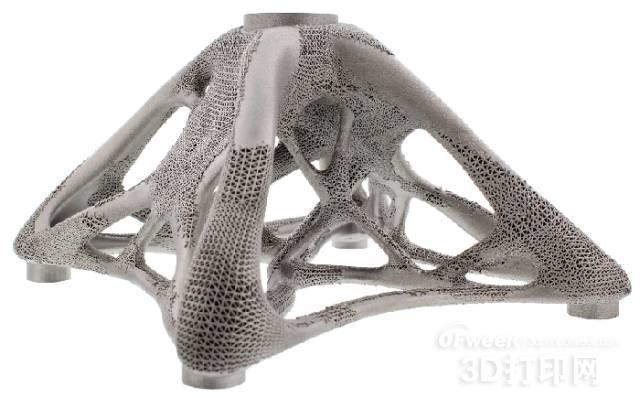
Image: Titanium "spider" frame, generated by Altair Optistrut software, and Materialise Magics software, using Renishaw AM250
Small lattice, the university asked. In addition to the brains of the design world, another key computational challenge facing current designers is to convert the lattice-designed files into print files that the printing device can read. In this process, you are quickly and easily caught in the preparation of huge models and endless build files. To avoid such annoyance, current experts are simplifying the process of generating and manufacturing lattice print files with new print files and custom laser exposure strategies.
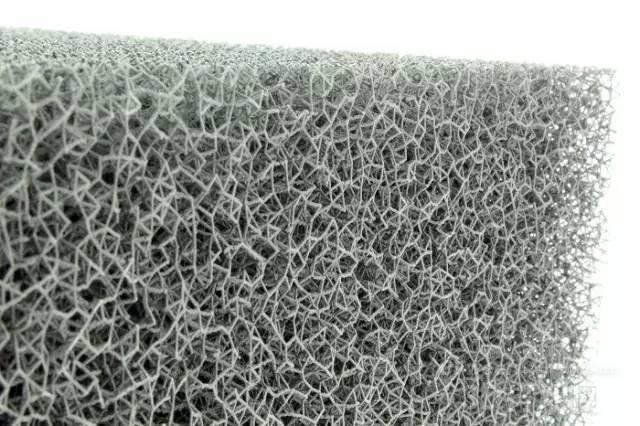
Image: Customized laser exposure strategy from Betatype is used to improve product mechanical performance and speed up the build process
In the additive manufacturing process, the crystal detail requires the precise control of the laser energy. The establishment of the lattice melting of each layer usually involves the risk of thousands of sparse distributions, and the test of the equipment is also reflected. In the case of Renishaw's equipment, the system-modulated laser can be focused to a 70-micron spot size, enabling a thin wall thickness of 140 microns.
When the design of the crystal lattice tends to be complicated, the manufacturing challenge is even greater. Especially materials such as titanium alloy can exhibit significant residual stress, so it is necessary to be careful after the completion of one layer, the next layer. When laying the powder, the material of the painting should not be too rigid. The too rigid painting tends to further destroy the newly constructed structure by the thermal deformation caused by the residual stress of the tiny structure of the crystal lattice.
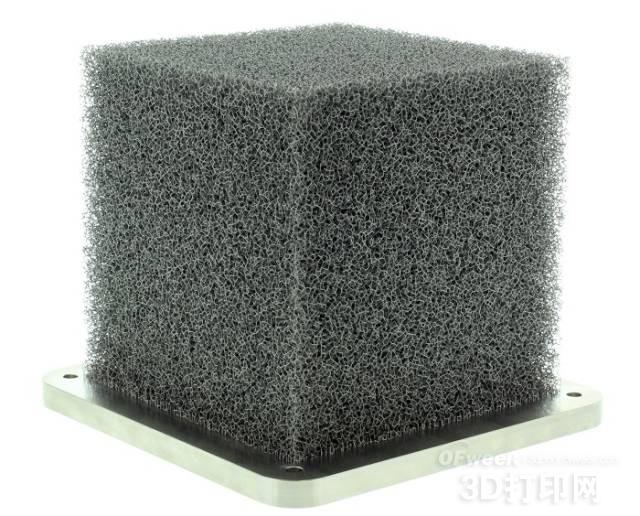
Photo: 8000 cubic centimeter of material, made of titanium alloy, software is Betatype CAD-CAM software platform, processing equipment is Renishaw AM250
Future Challenges Although the lattice is very attractive and attractive, there are still some obstacles that make lattice design difficult to use in the actual production of parts. A key challenge is to demonstrate the performance reliability of the design, especially in terms of fatigue resistance. Since the surface of the crystal lattice and the sharp intersections are many, this brings about stress concentration, and the actual use of the batch parts is unacceptable for events that may fail.
So a related question is how to verify the quality of manufacturing. The complexity of the crystal lattice makes it difficult to check in the traditional way. CT scanning provides a solution, albeit somewhat time consuming.
Despite the current challenges, complex lattice structures provide superior product performance – both in terms of efficiency and functionality. It also opens up a vast design space for lightweight components, as well as improved heat transfer, energy absorption, insulation and improved connection performance. We have reason to believe that one day, the lattice will occupy an important place in additive manufacturing.
In addition to Renishaw, Altair, and Materialise, the company is actively exploring the lattice structure. It is reported that domestic companies such as Platinum and China Academy of Space Technology are carrying out explorations that are not afraid of hardships, and have accumulated their own know how in the process of exploration, and these know how will also follow the importance of the lattice. The improvement of manufacturing feasibility has become a valuable advantage for these companies to compete in the future market.
Fashion Pulls,Kitchen Pulls,Kitchen Cabinet Hardware,Kitchen Handles
JESSO HARDWARE , https://www.china-jesso.com